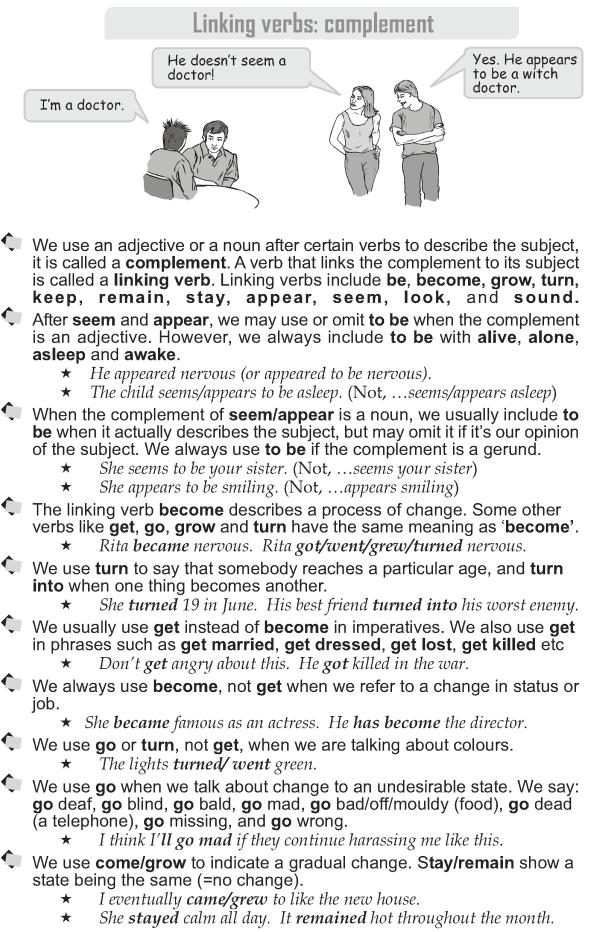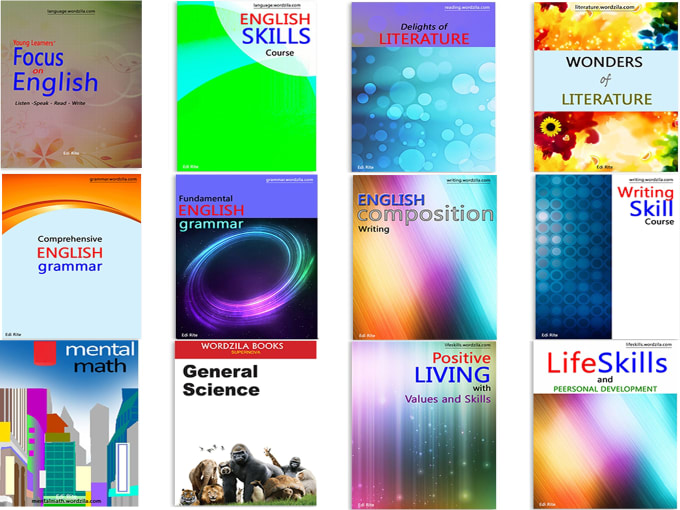Grade 10 Grammar Lesson 14 Linking verbs: complement
What is the complement?
What is the linking verb?
Do we use ‘to be’ after ‘seem’ and ‘appear’?
Can we use ‘get’ instead of ‘become’ in all sentences?
What linking verbs express gradual change? What verbs express the opposite?

- We use an adjective or a noun after certain verbs to describe the subject, it is called a complement. A verb that links the complement to its subject is called a linking verb. Linking verbs include be, become, grow, turn, keep, remain, stay, appear, seem, look, and sound.
- When the complement of seem/appear is a noun, we usually include to be when it actually describes the subject, but may omit it if it’s our opinion of the subject. We always use to be if the complement is a gerund.
- The linking verb become describes a process of change. Some other verbs like get, go, grow and turn have the same meaning as ‘become’.
- We use turn to say that somebody reaches a particular age, and turn into when one thing becomes another.
- We usually use get instead of become in imperatives. We also use get in phrases such as get married, get dressed, get lost, get killed etc
- We always use become, not get when we refer to a change in status or job.
- We use go or turn, not get, when we are talking about colours.
- We use go when we talk about change to an undesirable state. We say: go deaf, go blind, go bald, go mad, go bad/off/mouldy (food), go dead (a telephone), go missing, and go wrong.
- We use come/grow to indicate a gradual change. Stay/remain show a state being the same (=no change).
Go to page 1 2
